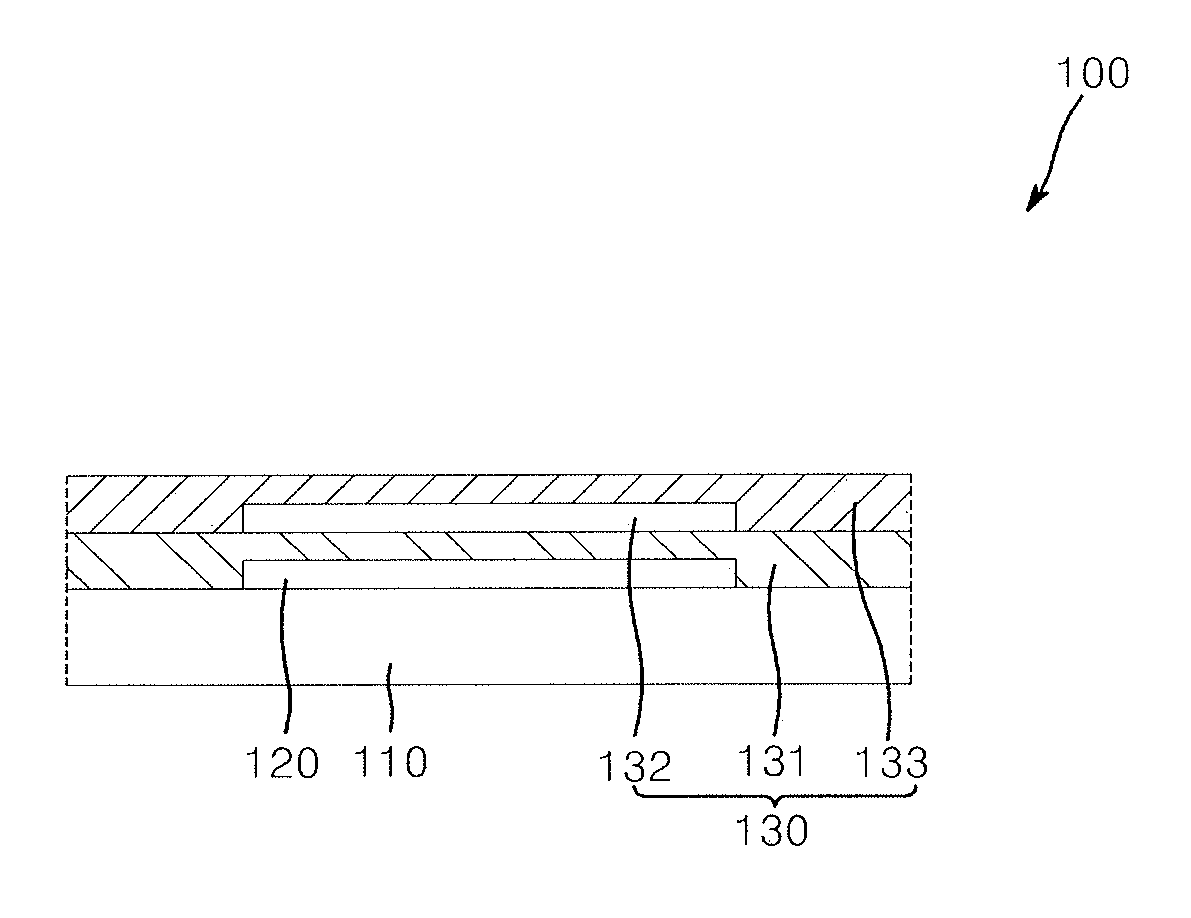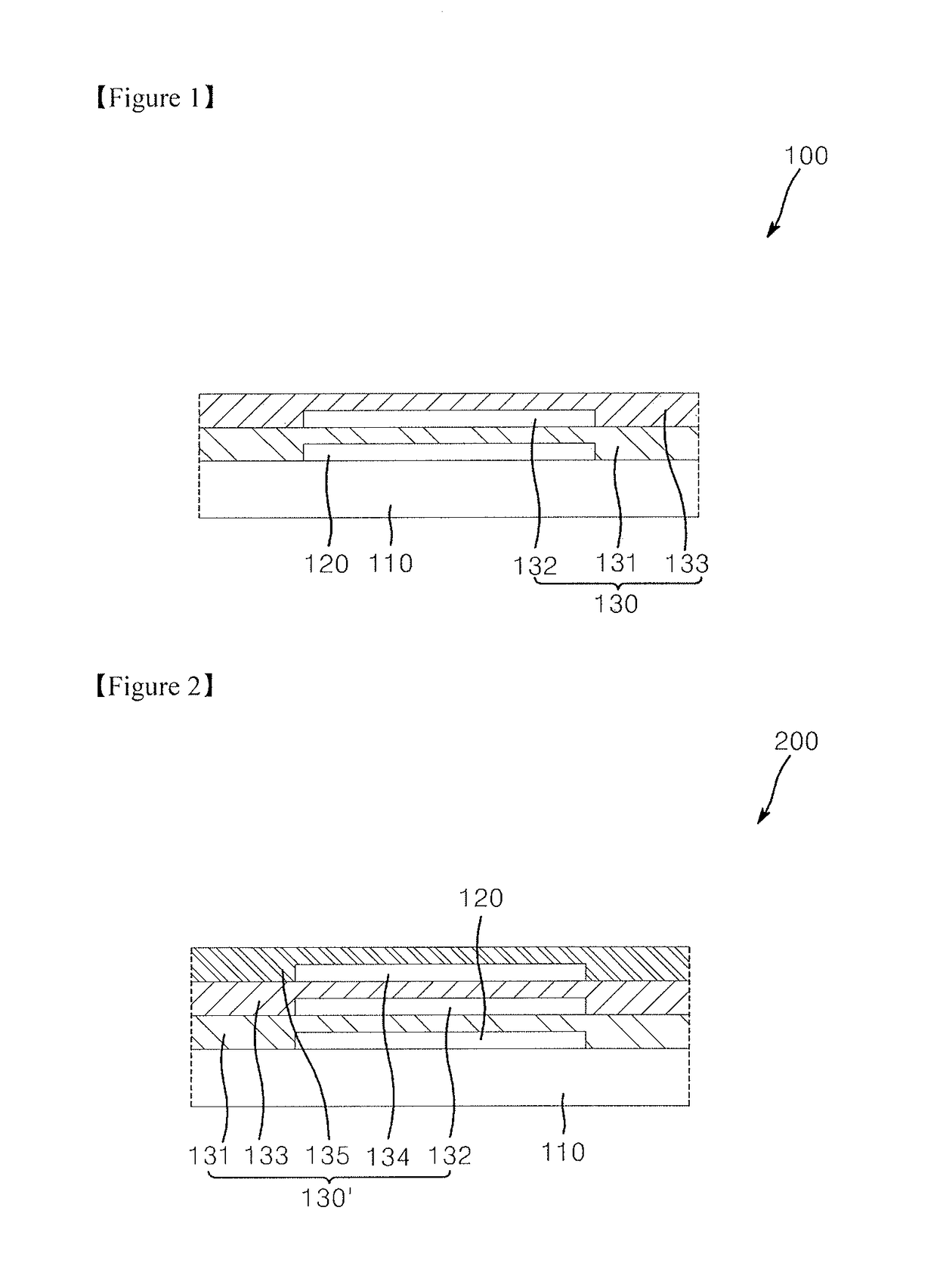Organic light emitting display
- Summary
- Abstract
- Description
- Claims
- Application Information
AI Technical Summary
Benefits of technology
Problems solved by technology
Method used
Image
Examples
example 2
Preparative Example 2
[0145]In a 2000 ml flask provided with a cooling tube and a stirrer, 600 ml of dichloromethane (Sigma Aldrich Co., Ltd.), 58.8 g of 2-hydroxyethyl methacrylate (Sigma Aldrich Co., Ltd) and 52.2 g of trimethylamine (Sigma Aldrich Co., Ltd.) were placed, followed by stirring at 0° C. while slowly adding 100 g of triphenyl chloromethane (Sigma Aldrich Co., Ltd.). The flask was heated to 25° C., followed by stirring for 4 hours. Then, dichloromethane was removed through distillation, followed by performing silica gel column chromatography, thereby obtaining 124 g of a compound represented by Formula 6. The obtained compound had an HPLC purity of 97%.
example 3
Preparative Example 3
[0146]In a 2000 ml flask provided with a cooling tube and a stirrer, 800 ml of acetonitrile (Fisher Co., Ltd.), 180 g of potassium carbonate (Aldrich Co., Ltd), and 108 g of acrylic acid were placed, followed by stirring at 0° C. while slowly adding 150 g of 4,4′-bis(chloromethyl) biphenyl (TCI Co., Ltd.). The flask was heated to 70° C., followed by stirring for 12 hours. Then, acetonitrile was removed through distillation, followed by performing silica gel column chromatography, thereby obtaining 177 g of a compound represented by Formula 7. The obtained compound had an HPLC purity of 97%.
example 4
Preparative Example 4
[0147]In a 3000 ml flask provided with a cooling tube and a stirrer, 300 ml of dichloromethane (Sigma Aldrich Co. Ltd.), 200 g of 2-hydroxyethyl acrylate (Shin Nakamura Chemical Co., Ltd.), and 168 g of triethylamine were placed, followed by cooling the flask to 0° C. and stirring for 2 hours while dropwise adding a solution obtained by dissolving 278 g of p-toluene sulfonyl chloride (Sigma Aldrich Co. Ltd.) in 500 ml of dichloromethane thereto. After additional stirring for 5 hours, residual solvents were removed by distillation. 300 g of the obtained compound was placed into 1000 ml of acetonitrile (Sigma Aldrich Co. Ltd.), and then 220 g of potassium carbonate (Aldrich Co., Ltd.) and 141 g of 2-phenyl phenol (Sigma Aldrich Co. Ltd.) were added thereto, followed by stirring at 80° C. Residual solvents and reaction residues were removed, thereby obtaining a compound represented by Formula 8. The obtained compound (weight average molecular weight: 296.36) had an...
PUM
| Property | Measurement | Unit |
|---|---|---|
| Thickness | aaaaa | aaaaa |
| Thickness | aaaaa | aaaaa |
| Molar mass | aaaaa | aaaaa |
Abstract
Description
Claims
Application Information
 Login to View More
Login to View More - R&D
- Intellectual Property
- Life Sciences
- Materials
- Tech Scout
- Unparalleled Data Quality
- Higher Quality Content
- 60% Fewer Hallucinations
Browse by: Latest US Patents, China's latest patents, Technical Efficacy Thesaurus, Application Domain, Technology Topic, Popular Technical Reports.
© 2025 PatSnap. All rights reserved.Legal|Privacy policy|Modern Slavery Act Transparency Statement|Sitemap|About US| Contact US: help@patsnap.com



